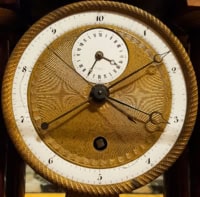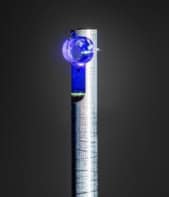
Possible variations in some fundamental physical constants could be detected by the very careful monitoring of the distances between atoms in a crystal. That is the conclusion of a new theoretical study by an international team of physicists including Lukáš Pašteka of Comenius University in Slovakia. If realized in the lab, experiments that look for tiny changes in the size of crystalline materials could point to extensions to the Standard Model of particle physics.
While the Standard Model of particle physics has been remarkably successful at describing elementary particles and how they interact, we know that the model does not paint a complete picture of nature – it does not describe neutrino masses and dark matter, for example. Physicists are therefore very keen to find further instances of where the model does not apply, which could provide important guidance about how the Standard Model could be extended.
One avenue of exploration is the possible variation of quantities that are assumed by the Standard Model to be fundamental constants of nature and therefore invariant in both space and time. These include the fine structure constant – which is a measure of the strength of the electromagnetic interaction – and the ratio of the masses of the proton and electron.
Sizing-up materials
Past searches for variations include looking for shifts in the atomic and molecular spectra of distant astronomical objects and changes in the timekeeping of highly accurate atomic clocks. So far, however, all attempts have been unsuccessful – at least within their measurement accuracies. Undeterred, a new generation of experiments are being planned and Pašteka’s team believe that systematic measurements of the sizes of solid-state materials should join the ranks.
The team calculated how certain solid-state materials and diatomic molecules would respond to hypothetical changes in the fine structure constant and proton-electron mass ratio. They reckon that a fractional increase in the fine structure constant of 10-17/year (the current experimental upper limit on its temporal variation) would cause a gold bar to shrink by a factor of 10-18/year, while a germanium crystal would grow by a factor of 10-21/year.

Highly charged ions could measure changes in fine-structure constant
Pašteka and colleagues also argue that by monitoring crystals over several years using advanced optical cavity and resonant-mass detection techniques, these tiny changes could be measured. Another possibility put forth by the team is using a set-up like the LIGO and Virgo interferometers – kilometre-scale experiments that detect gravitational waves by measuring fractional changes in length as small as 10-22. With some modification, Pašteka’s team believe that such instruments could be used to look for variations in fundamental constants.
The physicists now hope to further improve the prospects of their method by identifying materials with higher sensitivity coefficients.
The research is described in Physical Review Letters.



